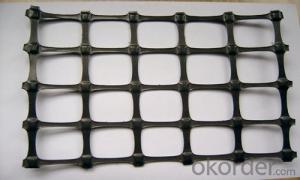Geo-textile mulch is versatile substance, which serves to enhance the growth and protection of plants, and a term that resonates with the innovative spirit of modern horticulture. I have followed closely any new ideas that could boost the health and vigor of my plantation for as long as I can remember. That’s why I was excited to learn about geo-textile mulch in detail and share it with other botanical enthusiasts.
What is Geotextile Mulch?
Essentially, geotextile mulch is a cloth-like material made from synthetic polymers. It works as an artificial layer above the soil replicating some natural organic mulches’ benefits while providing more of its own. This revolutionary material allows water and air to move through its fabric into plants’ roots but can also control weed germination as well as erosion. Such properties make it convenient for those who want a beautiful garden without much weeding.
Benefits of Geotextile Mulch
The multifaceted nature of geotextile mulching makes it one of the most appealing aspects about this product. In arid climates or during dry spells, for example, it can conserve soil moisture through evaporation reduction. The temperature regulation by the fabric ensures that extreme heat or cold does not affect plant roots hence creating favorable conditions for growth.
In addition, geo-textiles are excellent at preventing pests and diseases from destroying gardens. For example a physical barrier created using them prevents insects from reaching plant roots thereby reducing chances of infestation incidences occurring in soils. Also fungal spores do not spread because there is a protective layer against them.
Installation and Maintenance
You just need some planning and hard work when installing geotextile mulches so they should not give you much headache about installation process. Ensure you have levelled your ground before doing anything else. Unfold your fabric overlapping edges to get seamless coverings. To keep this mulch down, use landscape staples or pins and that’s all. Your garden will grow well if you occasionally check for any displacement and damages.
Environmental Impact
As an environmentally conscious gardener, one of the things I consider before using any material is its ecological footprint. Synthetic materials like geotextile mulch don’t make it seem green at first sight. But since it does not decompose easily unlike organic ones such as wood chips, it can last longer than these organic mulches. Also, some manufacturers have started offering biodegradable versions for those who are environmentally conscious.
Personal Experience with Geotextile Mulch
My interaction with geotextile mulch began with a small portion of my yard that had been ravaged by weeds and erosion. I gave this fabric a go and the outcome was nothing short of incredible. The once stubborn section transformed into a lush haven without a single weed interfering with my plants’ beauty. Lesser watering to do thanks to retaining moisture in the fabric left me with more time to savor what I had achieved through my hard work.
Applications Beyond Home Gardens
Although initially considering geotextile mulch only for personal gardens, I soon realized that it has far-reaching consequences beyond individual green spots too. This versatile product has applications in commercial farming, landscaping as well as large scale environmental projects among others. For instance where soil erosion is rampant like on slopes stabilization and construction sites; this becomes very handy material.
The Coming Geotextile Mulch
As the world looks to find sustainable and efficient solutions for agriculture and landscaping, geotextile mulch emerges as a hopeful alternative. I look forward to witnessing how this substance will be refined to suit different gardeners and environmentalists through continuous research and development.
In summary, geotextile mulch is not just a gardening accessory; it represents inventiveness and an unyielding commitment by humanity to strike balance with nature. Reflecting on my past experiences and the possible uses of this material fills me with hope about the future of floriculture. Therefore, whenever you are working in your farm or thinking of doing some landscaping job at your backyard remember the importance of using geotextile mulches in these spaces.







